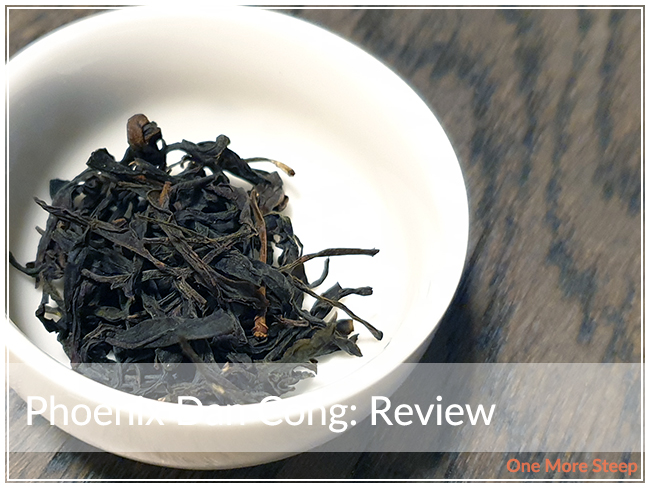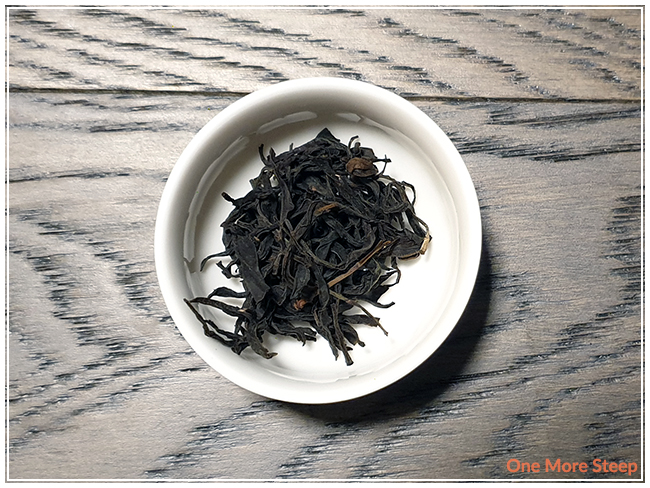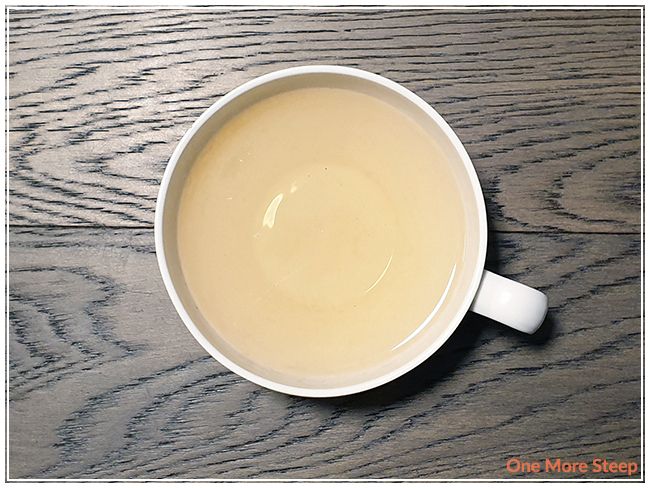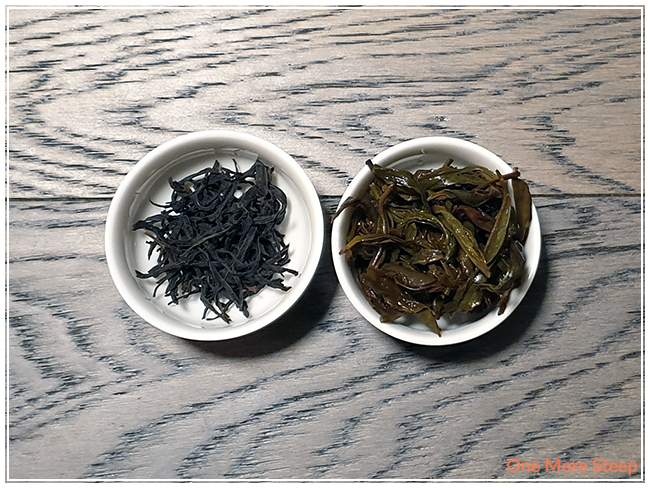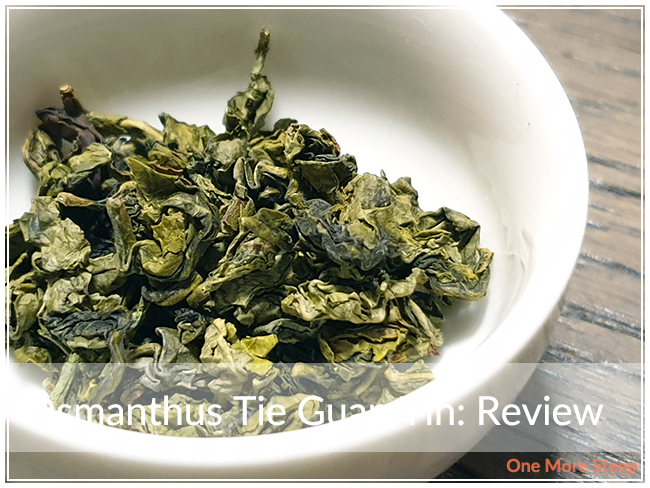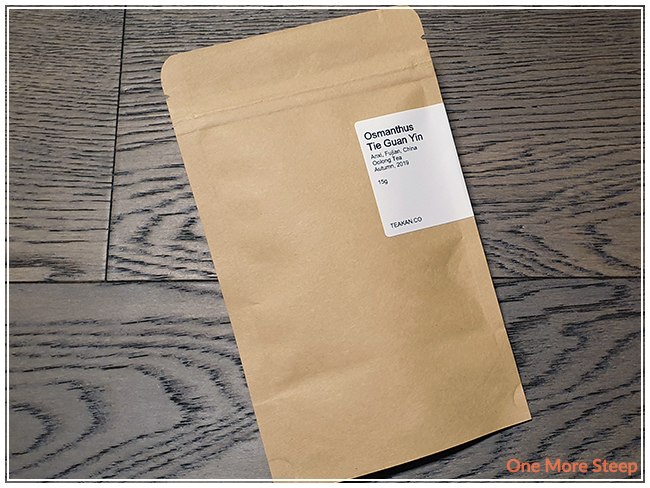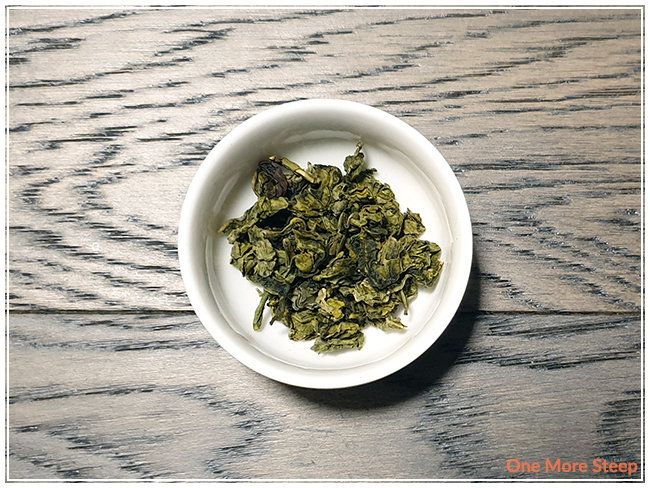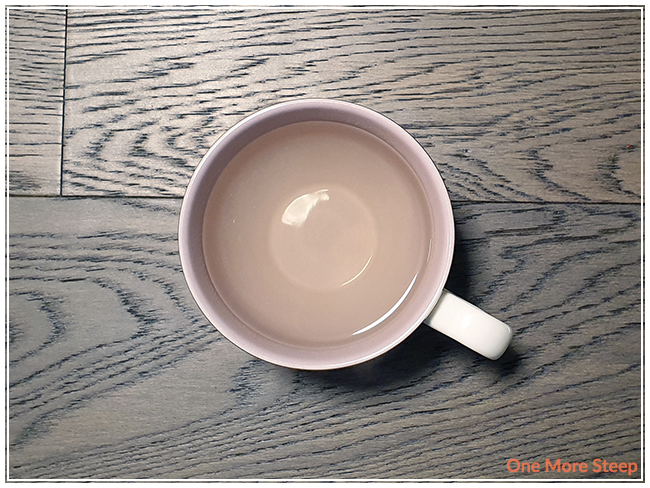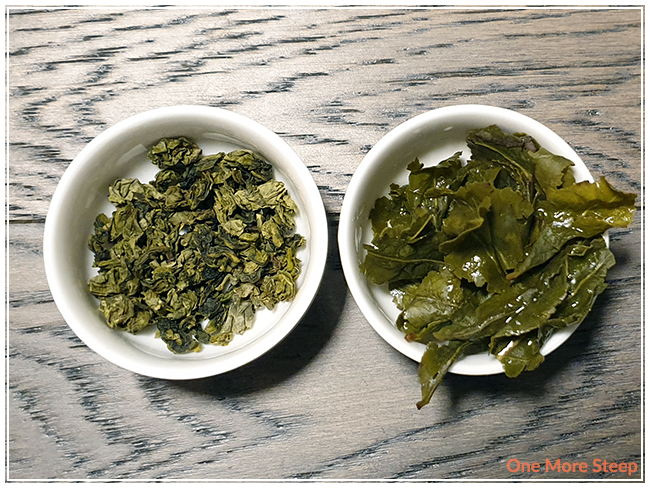Salted Caramel Oolong by DavidsTea
Oolong Tea / Flavoured
$9.98 for 50g
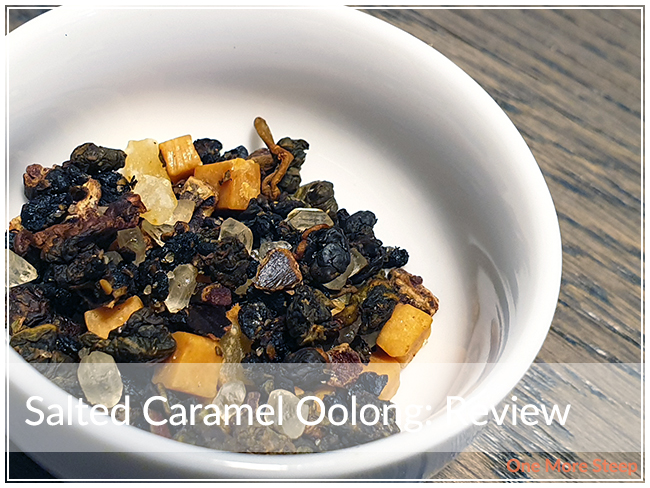
First Impressions
Salted Caramel Oolong is one of those blends that I saw in a photo, was a bit curious at all those salt chunks, and just had to give it a try. This is an oolong blend from DavidsTea and comes in a familiar silver pouch. As always, I still hate the labelling and the teeny tiny print… but nobody asked me for my opinion (I just happen to give it freely). The blue is nice, but I can see how it might be difficult for someone with poorer vision or perhaps colour blindness to have difficulty reading this turquoise text on a medium blue background. But again… nobody asked me for my opinion.
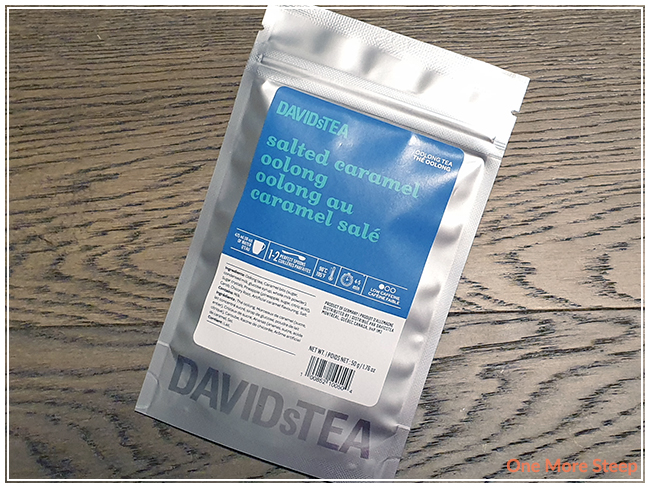
The aroma of Salted Caramel Oolong basically reminds me of salted caramel (treats). It smells like how one would expect it, and it’s very tempting. The tea consists of: oolong tea, caramel bits, sugar crystals, pineapple, carob, chicory root, artificial caramel flavouring, and salt. Those crystals that you can so easily see in the blend are sugar, not salt – yes, my dear readers, I tried one in the name of science. I’m not sure why they saw the need to add flavouring on top of the presence of caramel, I find that often just leads to disappointment over the expectations versus reality when it comes to steeping a flavoured tea. That said, it smells like candy (a pro) and I cannot smell the oolong base at all (a con).

Preparation
DavidsTea recommends steeping Salted Caramel Oolong in 90°C (195°F) water for 4 to 5 minutes. I opted to do an initial steep of 5 minutes with the recommended water temperature, which just so happens to be the oolong tea setting on my Breville kettle.
First Taste
Salted Caramel Oolong steeps to a deep reddish brown and there just seems to be a lot of… stuff floating around in it. Lots of bits here and there, some oils. If any of that sounds off-putting to you, I would recommend steeping Salted Caramel Oolong in a filter instead of an infuser – just makes life a little bit easier. It smells like salted caramel candy, but not much like oolong at all. The taste reminds me of liquid dessert – it’s sweet, I can taste salted caramel, and it’s got a thickness to the texture of the tea. I find it to be coyingly sweet, and very much has a mouth-coating effect to it.
This oolong blend definitely does not require any addition of sweetener, and I think that it could do with some evaporated milk (which I whole-heartedly added to the cup). The addition of dairy (or a dairy-free milk alternative if that’s more your jam) really helps to temper down that sweetness and adds a level of decadence to it – the creaminess helps perpetuate that idea of caramel, but the oolong base is still not present.
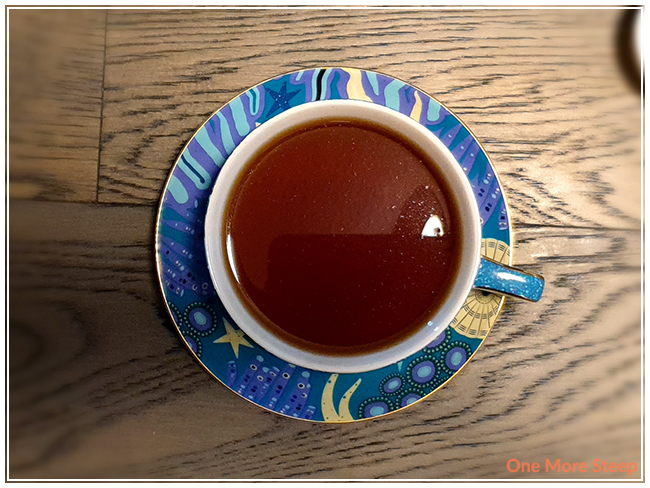
A Second Cup?
I attempted to resteep Salted Caramel Oolong, and found that it just wasn’t there in terms of what I was looking for. It was still quite sweet and that oolong base was nowhere to be found. I would recommend Salted Caramel Oolong for just the one steep (and as a tea latte over having it straight).
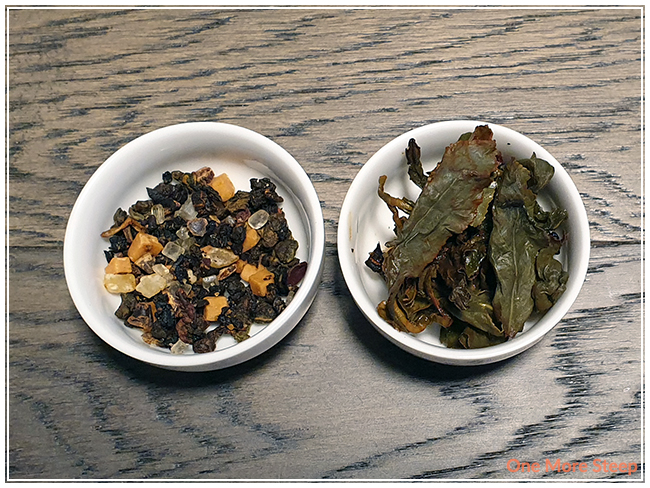
My Overall Impression
![]()
I thought that DavidsTea’s Salted Caramel Oolong was just okay. I think this tea by itself is just far too sweet – so far that it might give a person a toothache despite the fact that they’re a sweet tooth. I’m saddened by the fact that I really could not taste the oolong base, I think it was just overwhelmed by all of the other ingredients that are present in the blend. I find that the tea is greatly improved in the form of a tea latte, so would highly recommend drinking it in that format if you’re a fan of tea lattes. I am disappointed that the oolong base was nowhere to be found within the flavour profile because of the over-powering presence of the other ingredients that are present in the mix.
Curious about the cup rating system? Click here to learn more.
